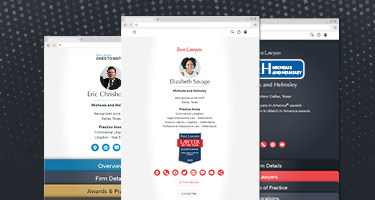The pandemic wrought previously unimaginable changes to the labor market. “The Great Resignation” that began in 2020 has continued into 2022, as workers resigned in record numbers. In 2021, 47.8 million workers quit their jobs across the country, a record year for resignations. In January of this year, another 4.3 million workers left their jobs. While some workers left to start their own business, to change careers or to retire, others are staying in the same industry and moving for higher pay, greater flexibility and better benefits. When salespeople and high-level employees leave to join a competitor, their former employers rightfully worry that their valuable trade secrets will go with them.
This increased employee mobility adds new challenges to employers who need to protect their confidential information and trade secrets, including both employers who have lost employees subject to non-compete, non-solicitation or non-disclosure agreements, and employers competing for talented employees who are subject to such agreements. The explosion in remote work also affects employers’ ability to protect their valuable information. Compounding these challenges, the current administration has announced efforts to restrict employers’ use of non-compete agreements.
Protecting Trade Secrets and Confidential Information in 2022
Employers have many tools at their disposal to protect trade secrets, including using non-compete, non-solicitation and non-disclosure agreements as well as invention assignments. But the Biden administration has expressed concern that non-compete agreements, in particular, unfairly limit worker mobility, and has recently taken steps to limit their use. Further, many states have limited the use and enforcement of non-competes and may refuse to enforce choice-of-law provisions requiring application of more employer-friendly states’ laws. In the face of this trend, employers should also focus their attention on protecting trade secrets through non-disclosure and non-solicitation agreements.
On July 29, 2021, President Biden signed an Executive Order titled “Promoting Competition in the American Economy.” The Order
- detailed a whole-of-government approach to address overconcentration, monopolization and unfair competition in the American economy;
- established a White House Competition Council within the Executive Office of the President to coordinate government efforts to promote competition, coordinate legislation and enforce fair competition, anti-monopolization and antitrust laws; and
- encouraged agency heads to influence regulations on competition in the industries under their jurisdiction.
Biden also directed the Federal Trade Commission to use its rulemaking authority to “curtail the unfair use of non-compete clauses and other clauses or agreements that may unfairly limit worker mobility.”
Following the Order, the Treasury Department, in consultation with the Departments of Justice and Labor and the FTC, investigated the effects of a lack of competition on the U.S. labor market. The Treasury Department released its report on March 7, 2022, detailing concerns about restrictive employment agreements. The report recognized that:
- a restrictive term in an employment contract is not automatically enforceable;
- “the degree to which courts will enforce such contract provisions varies between states;”
- enforceability may vary by occupation; and
- “[e]mployers who illegally use restrictive covenants rarely face sanctions[.]”
In line with the Biden Administration’s Whole-of-Government approach, on March 10, 2022, the Justice Department’s Antitrust Division and the Labor Department announced that they had signed a memorandum of understanding to “strengthen the partnership between the two agencies to protect workers from employer collusion…and promote competitive labor markets and worker mobility.” The two agencies intend to “share enforcement information, collaborate on new policies and ensure that workers are protected from collusion and unlawful employer behavior.”
The DOL will, as appropriate, refer potential antitrust violations to its Antitrust Division, when it discovers potential violations while conducting investigations under its jurisdiction. Similarly, the DOJ will refer labor issues to the DOL that it discovers during the course of enforcing its own statutes. The DOJ has also signaled an increased willingness to prosecute perceived wage-fixing and otherwise aggressively enforce antitrust laws to promote and protect competition.
Another area of concern is so-called “no-poach” agreements, where competitors agree not to hire each other’s top-level employees. While such agreements have sometimes been used in agreements to resolve disputes over solicitation of employees, the DOJ can, and will, prosecute companies and individuals who conspire to suppress competition.
What types of restrictive covenants are enforceable?
Absent any countervailing federal rules, many courts continue to find valid and enforce non-compete provisions, covenants preventing solicitation of customers and employees and nondisclosure of confidential information where a legitimate business interest underlying those covenants is identified. Those legitimate business interests include:
- Trade secrets;
- The sale of goodwill associated with an identifiable business practice, geographic or marketing area;
- Valuable confidential information, such as intellectual property, business processes and strategies, sales plans and marketing material, detailed information about customers and sales and internal financial information;
- Substantial relationships with specific prospective or existing customers, patients or clients, where proprietary information is at play; and
- Employees with extraordinary or specialized training.
In addition to non-compete agreements, employers should also consider protecting their trade secrets by using non-disclosure agreements (NDAs). NDAs can put employees on notice that the company considers certain information confidential and require both current and former employees to maintain the secrecy of that information.
Employers should also consider whether their jurisdiction permits non-solicitation clauses in their employment agreements with salespeople and other high-level employees, which prevent those employees from soliciting their former employer’s customers or employees for a specified period of time. In general, those agreements will be enforced to prevent unfair competition if the restriction is reasonable in time, geography and is related to the employer’s type of business.
Finally, in certain industries, employers may require certain employees to sign invention assignments, in which employees are required to assign to the company any improvements they make to the company's intellectual property while in their employ.
What types of restrictive covenants should be avoided?
Employers should avoid no-poach agreements, covenants that are overbroad in time and geographic limitations and unrelated to the employer’s business, and agreements that are in conflict with the public policy of the state where an employee resides.
- No-poach agreements. DOJ is willing to prosecute competitors who enter into no-poach agreements and has done so. In March 2021, a federal grand jury in Nevada returned two criminal antitrust indictments against a health care staffing company and its former manager, accusing them of conspiring with a competitor “to allocate employee nurses and to fix the wages of those nurses, in violation of the Sherman Act.”
- Overbroad agreements. Non-compete agreements that impose broad geographical areas outside of employee’s regular scope of work, such as a nationwide restriction when the employee works in a two-mile radius from the employer’s location, unreasonably long restrictions, such as restrictions for more than two years or are unrelated to the employer’s business, such as prohibiting selling widgets when the employer sells gadgets, will likely be unenforceable.
- Choice-of-law provisions where the employee’s resident’s state public policy conflicts with the law of the employer’s state. Other state courts will refuse to enforce a state’s non-compete law where that law conflicts with that state’s public policy. For example, courts in Georgia, New York and Illinois have found that Florida employer-friendly law on restrictive covenants violates the public policy of those states. In California, there are specific statutory requirements for enforcing choice of forum and choice of law provisions that apply other state’s laws.
Conclusion
While the FTC has engaged in informal fact-finding through virtual workshops regarding competition in labor markets, any rulemaking action is likely to be delayed due to a vacancy on the five-person commission. Absent action by the FTC, Congress may act on the bi-partisan Freedom to Compete Act co-sponsored by Senator Marco Rubio, which would amend the Fair Labor Standards Act of 1938 to prevent employers from using non-compete agreements in employment contracts for certain non-exempt employees. That bill was referred to committee in July 2021. We can expect some form of federal action in the future. Accordingly, employers should ensure that future restrictive covenants protect an employer’s trade secrets while not overtly prohibiting competition.
Board Certified in Labor and Employment Law, Katie Molloy focuses her practice on trade secret and restrictive covenant litigation, and defending matters involving discrimination, harassment, wrongful discharge and wage and hour claims in state and federal court. She provides advice and counseling on all employment law and human resources matters, and assists employers with administrative investigations before the EEOC, DOL and NLRB.
Jennifer W. Corinis has deep trial and appellate experience, in both federal and state courts, focusing on claims of alleged individual and class discrimination, Title VII, the Americans with Disabilities Act, the Age Discrimination in Employment Act and the Rehabilitation Act of 1973, as well as complex medical malpractice and tort cases. Prior to joining the firm, Jennifer was an Assistant U.S. Attorney in the Middle District of Florida where she gained valuable courtroom experience—approximately a dozen trials and more than ten oral arguments before the Eleventh Circuit. Before joining the U.S. Attorney’s Office, Jennifer spent six years in private practice at two large Boston law firms, where she defended auditing firms in securities class actions, and participated in employment and intellectual property matters.
Andrea E. Nieto is member of the Labor & Employment Practice in Greenberg Traurig's Tampa office. In addition to assisting employers with investigations before the EEOC, OSHA and FCHR, she represents employers in disputes regarding restrictive covenants and alleged discriminatory practices in both state and federal court. Prior to joining GT, she served as a federal clerk in the U.S. District Court for the Middle District of Florida and litigated ERISA life insurance, and disability insurance disputes.































